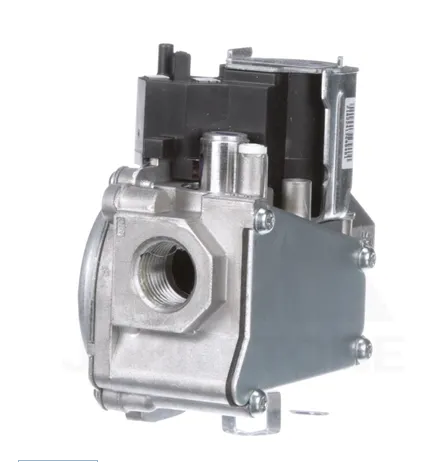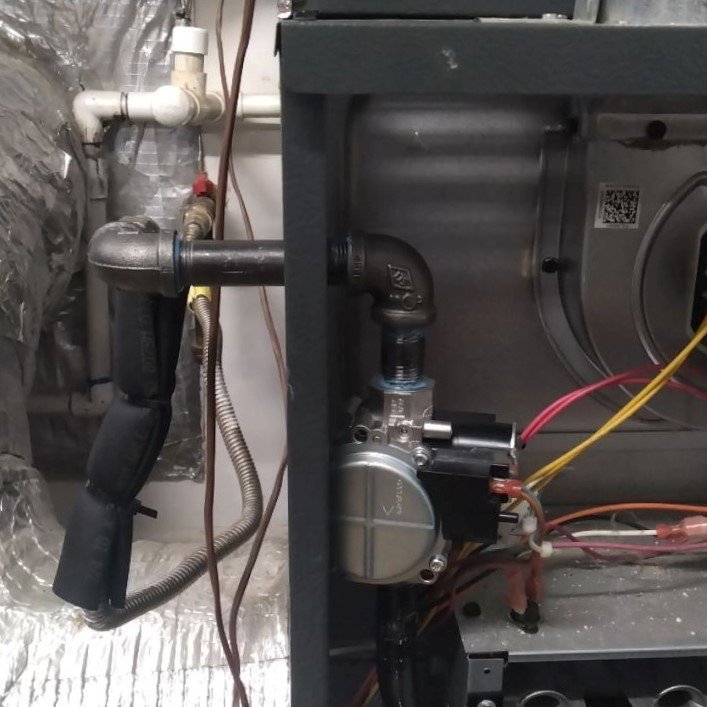Furnace Gas Valve Replacement Cost: How Much Does It Cost?
How much does it cost to replace a gas valve?
$200-600
Average cost: $300-400
There is a large spectrum of gas furnace designs, construction, and efficiencies.
For ultra-high-efficiency furnaces, gas valve replacement costs could exceed $600. But this would be rare in most homes in Knoxville. There is a generic gas valve alternative that would work and save cost. But it doesn't work on all furnaces.
Gas valves should not be rebuilt. An interesting fact about gas valves is that once purchased they cannot be returned for a refund. They are covered by most manufacturer warranties, 5-10 years.
Quick Links:
Introduction
When it comes to maintaining a warm and comfortable home during the colder months, your furnace plays an indispensable role. Among its various components, the gas valve is crucial for regulating and controlling the flow of gas to the furnace. Understanding the gas valve replacement cost is vital for homeowners looking to maintain their heating systems efficiently. This guide aims to provide comprehensive insights into the "gas valve cost," exploring the factors that influence the "gas valve replacement cost" and answering the common question, "How much is a gas valve replacement?"
Understanding the Gas Valve in Your Furnace
Before delving into the costs, it’s essential to understand the basic operation of a furnace gas valve in a residential furnace. A furnace gas valve functions as the gatekeeper of the gas flow into the furnace’s burner, responding to the thermostat’s signals to maintain the desired temperature in your home. It ensures the right amount of gas is released, aiding in efficient and safe furnace operation.
Reasons for Gas Valve Failure
Gas valves can fail for several reasons, leading to a faulty gas valve, including wear and tear from regular use, dirt and debris affecting the valve’s operation, and electrical issues causing malfunctions. In some cases, external factors like fluctuations in gas pressure can also contribute to valve failure.
Frequency of Gas Valve Failures
Typically, gas valves are robust and reliable components. However, like any mechanical part, they are susceptible to wear over time. The frequency of failures largely depends on the furnace’s age, maintenance history, and quality of installation. Regular maintenance can significantly reduce the risk of untimely gas valve failures. Regular maintenance of all furnace parts, including the gas valve, can significantly reduce the risk of untimely failures.
The Cost of Gas Valve Replacement
The “gas valve replacement cost” can vary based on several factors:
Type of Gas Valve: Standard gas valves are generally more affordable, while more advanced, staged gas valves, which offer greater control and efficiency, tend to be more expensive.
Brand and Model Compatibility: Some high-efficiency furnace models require specific, brand-compatible gas valves, which can affect the cost.
Labor Cost: The complexity of the installation and the expertise of the technician also play a role in determining the overall labor cost.
On average, homeowners can expect the “gas valve cost” to range between $200 to $600, including parts and labor. However, this range can vary depending on your location and the specific requirements of your furnace system. The cost of furnace gas valve replacement can vary based on the specific requirements of your furnace system and the expertise of the technician.
Duration of Replacement
Replacing a gas valve typically takes a few hours. The process involves shutting off the gas supply, removing the old valve, installing the new valve, and ensuring everything is safely and correctly connected. An experienced technician can perform this task efficiently, minimizing the downtime of your heating system. During the replacement process, other components such as the blower motor may also be inspected to ensure the overall efficiency of the furnace system.
Conclusion
Understanding the “gas valve replacement cost” is crucial for homeowners to plan and budget for furnace maintenance. While the cost can vary, investing in timely replacements and regular maintenance can save you from more significant expenses in the long run and ensure your home remains warm and comfortable. Maintaining your gas furnace in good working order is a cost-effective form of heating your home, ensuring long-term savings and comfort. Always consult with a licensed HVAC professional to get an accurate estimate and high-quality service for your specific furnace model and requirements.




